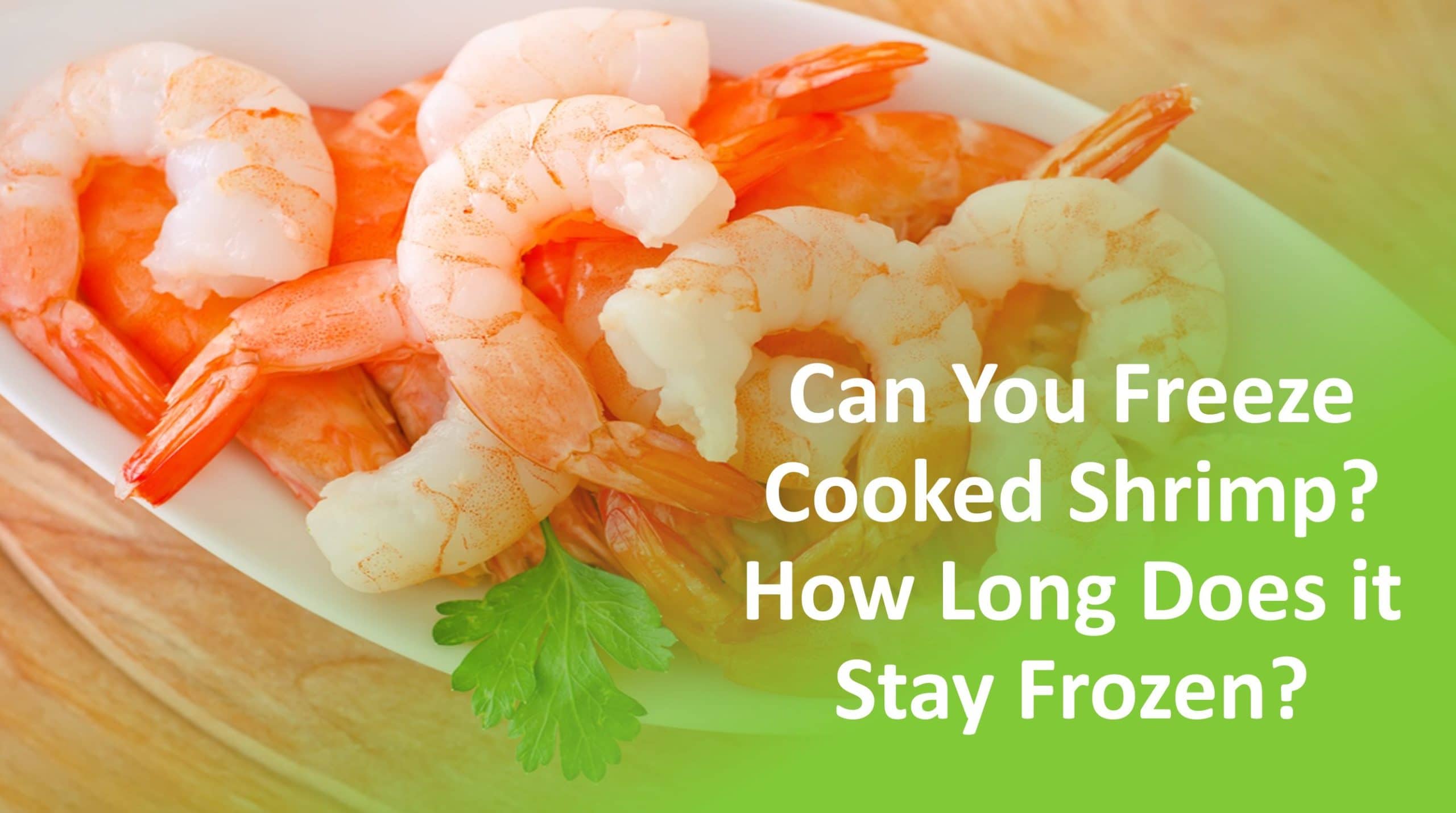Hey there fellow seafood lovers! I’ve been getting tons of questions about frozen shrimp storage lately, so I thought I’d share everything I know about keeping those tasty crustaceans fresh in your freezer As someone who buys shrimp in bulk when it’s on sale, I’ve learned quite a bit about proper storage techniques over the years.
Quick Answer
The short version? When stored properly at 0°F (-18°C). raw shrimp can last
- 1-2 months: Best quality
- 3-6 months: Good quality
- 6-12 months: Still edible but may lose some texture/flavor
Proper Freezing Methods for Best Results
How to Freeze Raw Shrimp
Here’s my tried-and-true method for freezing fresh shrimp:
-
Choose fresh shrimp that
- Smells fresh (not fishy)
- Looks bright and firm
- Was properly refrigerated at the store
-
Prep the shrimp:
- Clean and devein if desired
- Pat completely dry with paper towels
- Pro tip: I leave shells on for better protection
-
Flash freeze:
- Lay shrimp in single layer on baking sheet
- Freeze for about 2 hours until solid
- This prevents them from sticking together
-
Package for storage:
- Transfer to freezer bags or containers
- Remove as much air as possible
- Label with date and contents
- Store at 0°F or below
Signs Your Frozen Shrimp Has Gone Bad
Nobody wants food poisoning! Here’s what I look for when checking if frozen shrimp is still good:
Throw it out if you notice:
- Funky fishy or ammonia smell
- Mushy or slimy texture
- Grayish color instead of translucent
- Freezer burn or heavy ice crystals
- Dark spots or discoloration
- Any sign of mold
Storage Tips for Maximum Freshness
Best Storage Practices
-
Temperature Control
- Keep freezer at 0°F (-18°C) or below
- Store in coldest part (usually back center)
- Avoid door storage where temp fluctuates
-
Packaging Matters
- Use quality freezer bags or containers
- Double wrap for extra protection
- Remove all air possible
- Consider vacuum sealing for longest storage
-
Organization
- Label everything with dates
- Use oldest packages first
- Don’t overcrowd freezer
- Monitor freezer temperature regularly
Thawing Frozen Shrimp Safely
Safe Thawing Methods:
Recommended Method: Refrigerator
- Place in bowl to catch drips
- Thaw overnight in fridge
- Use within 1-2 days
Quick Method: Cold Water
- Keep shrimp in sealed bag
- Submerge in cold water
- Change water every 30 mins
- Cook immediately after thawing
⚠️ Never:
- Thaw at room temperature
- Use warm/hot water
- Leave out more than 2 hours
- Refreeze after thawing
Special Considerations
Cooked vs Raw Shrimp
While you can freeze both, here’s what I’ve learned:
- Raw freezes better than cooked
- Cooked only lasts 2-3 months frozen
- Texture changes more with cooked shrimp
Marinated Shrimp
If freezing marinated shrimp:
- Use mild marinades (avoid highly acidic)
- Freeze for max 2-3 months
- Package extra carefully to prevent leaks
My Top Storage Tips
After years of freezing shrimp, here’s what works best:
- Buy fresh, high-quality shrimp to start
- Clean and prep before freezing
- Use proper freezer-safe packaging
- Remove all air possible
- Label everything clearly
- Monitor freezer temperature
- Use within recommended timeframes
- Never refreeze thawed shrimp
FAQ About Frozen Shrimp
Q: Can I refreeze thawed shrimp?
A: Generally no – only if it still has ice crystals and was thawed in fridge less than 2 days.
Q: Is 2-year-old frozen shrimp safe?
A: While it might be safe if stored perfectly, I wouldn’t recommend eating shrimp frozen that long. Quality seriously declines after 1 year.
Q: Should I freeze shrimp with shells on or off?
A: Either works, but shells provide extra protection against freezer burn. I usually leave them on.
Final Thoughts
Proper freezer storage can keep shrimp fresh and tasty for months! Just remember my key points:
- Start with quality shrimp
- Package properly
- Maintain consistent freezer temp
- Use within recommended times
- When in doubt, throw it out!
Would you like me to explain or break down any part of this article further?

Is it necessary to thaw meat or fish before cooking?
No, meat and fish can be cooked from the frozen state if extra cooking time is allowed. The amount of time will depend on the size and shape of the cut. Large frozen roasts can take as much as 11/2 times as long to cook as unfrozen cuts of the same weight and shape. Small roasts and thin cuts such as steaks and chops require less time.
Can meat and poultry be thawed in the conventional oven?
No, meat and poultry should never be thawed in the conventional oven or at room temperature. There is greater danger of bacterial growth and food spoilage for food thawed at room temperature. Thaw meat and poultry in the refrigerator in the original wrappings. To speed thawing, loosen the wrapping. To keep other foods safe, put the thawing meat and poultry in a pan on the bottom shelf. For a quicker method, immerse meat or poultry in a watertight bag into cold water. Thaw until it is pliable. Meat and poultry can also be thawed quickly and safely in the microwave oven, followed by immediate cooking, either in the microwave oven or by some other method. Because microwave ovens vary, check your manufacturers instructions for information on how to safely thaw in your microwave oven. Frozen meat and poultry can also be cooked without thawing.
Heating or scalding the vegetables in boiling water or steam for a short period of time.
